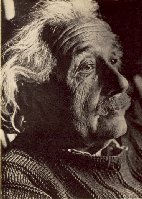|
A discovery by astronomers using the Hubble
Space Telescope supports the notion that the Universe is filled
with a mysterious form of energy pushing galaxies apart at an ever-increasing
rate.
by Dr Tony Philips
NASA's Hubble Space Telescope has spotted
a burst of light from an exploding star located much farther from
Earth than any previously seen - a supernova blast in the early
Universe that is casting light on a mystery of truly cosmic scale.
This stellar explosion is extraordinary
not only because of its tremendous distance - 10 billion light-years
from our planet - but also because it greatly bolsters the case
for the existence of a mysterious form of "dark energy" pervading
the cosmos. The concept of dark energy, which shoves galaxies away
from each other at an ever-increasing speed, was first proposed,
then discarded, by Albert Einstein early in the last century.
The Hubble discovery also reinforces
the startling idea that the universe only recently began speeding
up -- it offers the first tantalising observational evidence that
gravity began slowing down the expansion of the universe after the
Big Bang, and only later did the repulsive force of dark energy
win out over gravity's grip.
The team of astronomers, led by Adam
Riess of the Space Telescope Science Institute (STScI), made the
discovery by analysing hundreds of images taken by Hubble to study
how galaxies formed.
"This supernova appears to be one of
a special class of explosions that allows astronomers to understand
how the universe's expansion has changed over time, much as the
way a parent follows a child's growth spurts by marking a doorway,"
said Riess. "It shows us the universe is behaving like a driver
who slows down approaching a red stoplight and then hits the accelerator
when the light turns green."

Astronomers know the universe
is expanding because of the "red shift" seen in the light
from distant galaxies. Due to the Doppler Effect, light
waves are compressed when a light source is moving toward
you and stretched when it's moving away. This happens to
sound waves too, which is why the pitch of a police car's
siren drops as the car passes you. With light, however,
frequency equates with colour, not pitch. Higher frequencies
look bluer and lower frequencies look redder. So the "red
shift" in the light from the galaxies around ours means
those galaxies are moving away from us. How could all
the galaxies be moving away from us? Only if the universe
itself is expanding, as demonstrated by the balloon below.

|
The record-breaking supernova appears
relatively bright, a consequence of the Universe slowing down in
the past (when the supernova exploded) and accelerating only recently.
"Long ago, when the light left this
distant supernova, the universe appears to have been slowing down
due to the mutual tug of all the mass in the universe," explained
Riess. "Billions of years later, when the light left more recent
supernovas, the universe had begun accelerating, stretching the
expanse between galaxies and making objects in them appear dimmer."

Albert Einstein revamped humanity's understanding of the
universe in several fundamental ways. Special Relativity overhauled
our notions of space and time, and General Relativity modified
those ideas to include an explanation of the hitherto mysterious
force of gravity. Now it appears his conjecture that the universe
is pervaded by an expansive force called the "cosmological
constant" was also correct.
|
"Hubble's ability to find titanic stellar
explosions at these extreme distances is what it takes to confirm
this theory that the universe must have been slowing down before it
switched into high gear," said Dr. Anne Kinney, Director of NASA's
Origins program at NASA Headquarters, Washington, DC. "Later this
year astronauts will install a new camera on Hubble that will give
us 10 times better resolution than the current camera, which will
give us even better capability to find answers to grand cosmic questions
like this."
Observations of several distant supernovae
by two teams of astronomers in 1998 led to the theory that the universe
got the "green light" to accelerate when it was half its present
age. Astronomers say the new Hubble findings rule out other explanations.
Shortly afterwards, astronomer Edwin
Hubble made the celebrated discovery that the universe was expanding.
He assumed that the universe must be slowing down under gravity
and might even come to a halt, leading Einstein later to say that
his cosmological constant was the biggest blunder of his career.
Now it appears Einstein was on the right track after all.
The source of the repulsive gravity
may be something akin to Einstein's cosmological constant -- referred
to as the energy of the "quantum vacuum," a subatomic netherworld
pervading space -- or it may be something entirely new and unexpected.
"While we don't know what dark energy
is we are certain that understanding it will provide crucial clues
in the quest to unify the forces and particles in the universe,
and that the route to this understanding involves telescopes, not
accelerators," said astrophysicist Michael Turner of the University
of Chicago.
|
